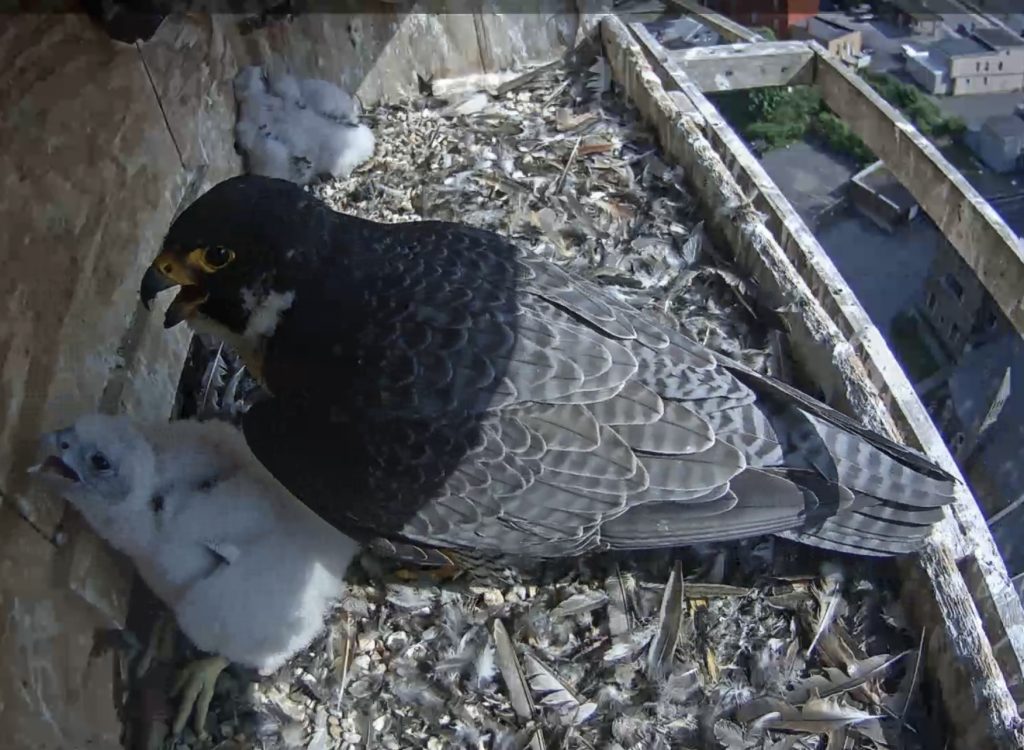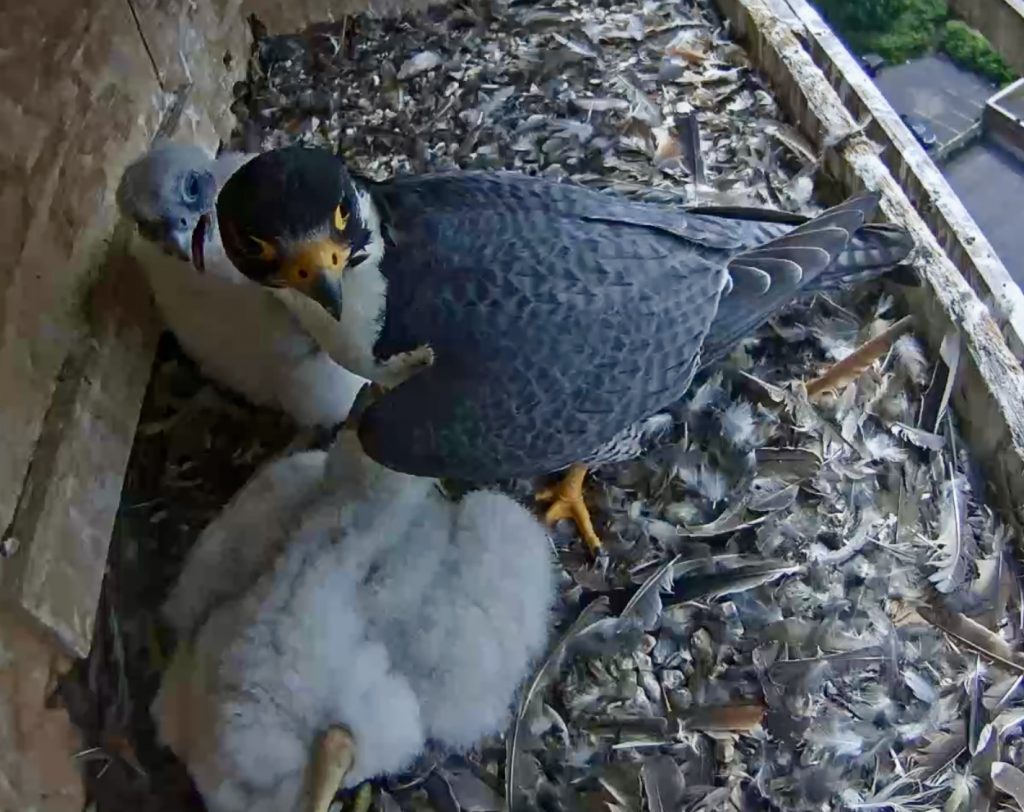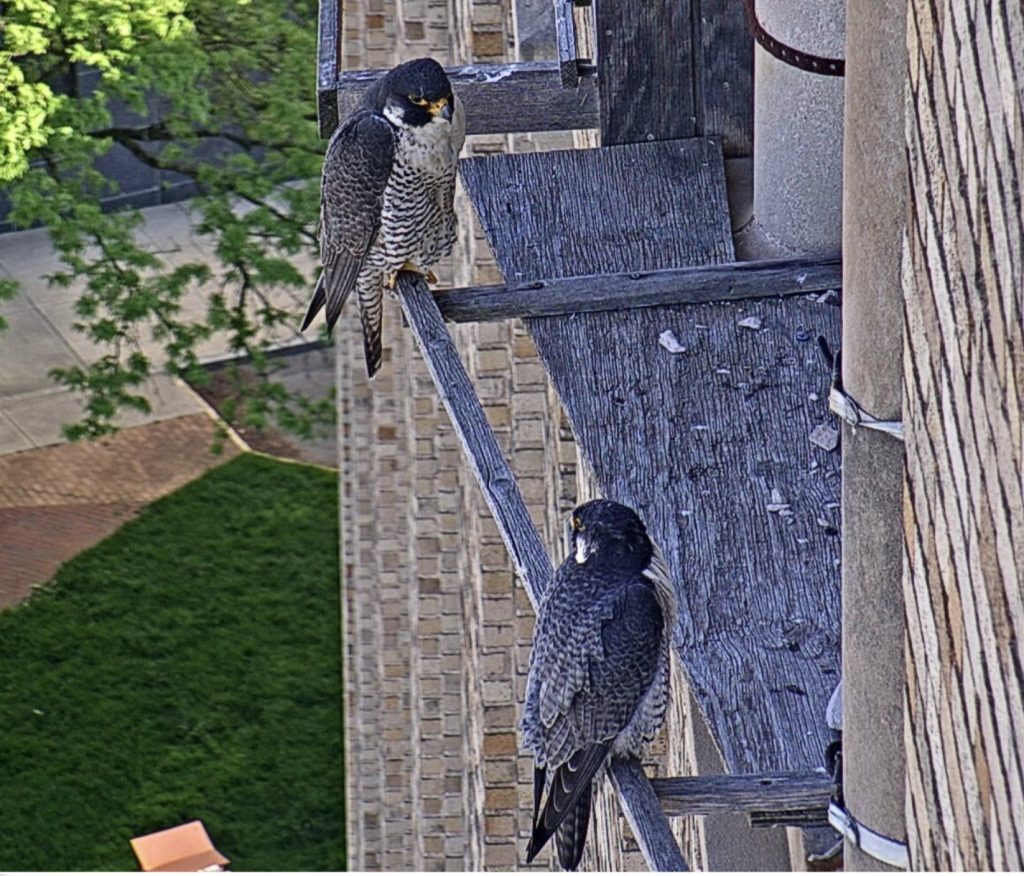Update for Monday, May 20, 2024

It was hot today, and that meant Astrid & Ares had to provide shade for the nestlings in the box. Sometimes we make light of the adults and their shading techniques and how ridiculous they sometimes appear, but it is a serious business. In hot conditions, raptor chicks face a significant risk of overheating in their nests, which can have dire consequences for their health and survival. Birds of prey, such as eagles, hawks, and falcons, typically nest in exposed areas like cliffs, tall trees, or open landscapes where they are more vulnerable to direct sunlight and high temperatures. Unlike adult birds, which can regulate their body temperature more effectively by panting or seeking shade, nestlings are less capable of managing extreme heat. Overheating can lead to dehydration, heat stress, and fatalities if the chicks are unable to cool down.

Parents of nesting raptors do their best to mitigate the risks by shading their young with their wings, or by corralling them to shadier parts of the nest. However, during prolonged heatwaves or extreme temperature spikes, these measures may not be sufficient. The limited ability of nestlings to thermoregulate, combined with their reliance on parental care, makes them particularly vulnerable. Overheating can impair their growth, weaken their immune systems, and reduce their chances of fledging successfully. Therefore, it is crucial for the parents to be ever vigilant, to monitor their offspring, and to be ready to do what it takes to protect them from the dangers of extreme heat.
